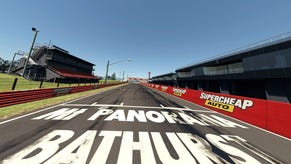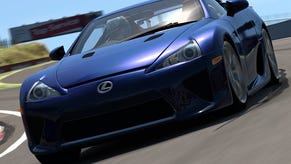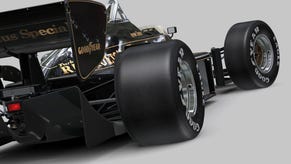How Gran Turismo 6's handling changes everything
Sony's driving sim returns with a slight lick of paint, but under the skin it's all new.
Gran Turismo's long taken a battering for deficiencies in its artificial intelligence. For years the game's AI drivers were renowned for slotting into single file moments after the start and dutifully following each other round in an automotive conga line. And within hours of the recent GT6-powered GT Academy demo appearing, there was already a video of five AI cars performing a comical 'after you, I insist' routine to try and get around a parked player.
But the secret that driving sim fans know, which isn't necessarily apparent to those whose blood doesn't run thick with gasoline, is that if the physics are good enough it's an irrelevance. With the right handling model, the only entertainment you need is a circuit, a vehicle and the stopwatch. There's almost endless room for improvement chasing the perfect lap and satisfaction comes from the tactile pleasure of driving as close to the car's mechanical limits as possible.
The GT Academy demo, which challenges players to set just such a hot lap around Silverstone, is the first opportunity to spend some quality time with a mathematical model that has seen substantial improvement since Gran Turismo 5. It's the product of new technical partnerships with tyre manufacturer Yokohama and suspension company KW that has seen more real-world data informing the game's physics. This might not be the final version we'll see in Gran Turismo 6, but it's already a world apart from the previous instalment.

The effect of the suspension tweaks will be immediately, visually obvious. Prod the brakes and the car's front bumper will plunge towards the asphalt. Throw it into a turn and the outside wheels will disappear into the wheel arches. In practical terms, this means a much greater sense of the heft of the vehicle and a much better idea of where that weight is moving at any given moment.
And while juggling all that lurching weight might sound like an extra responsibility that's going to result in more high-speed accidents, it's actually usually the opposite. Now when the rear end breaks free you're far more aware of the building forces that caused it, making it easier to inch towards the car's cornering limits. Having said that, if you're brave enough to play the game with ABS switched off entirely, you'll have to be far more conscientious about braking in a straight line. Mash the brakes with one side of the car 'loaded up' and you'll lock those wheels, causing a blur of scenery and a backwards trip into the barrier.
One thing that's not tremendously well illustrated with the road cars featured in the GT Academy demo is the effect of aerodynamic load but, based on time with the game at E3, the new suspension model means that is far more pronounced as well. As you gain speed in a wing-festooned racer, you'll feel the car pressed into the asphalt and the suspension becomes less pliant. Slow for a tight hairpin and all that downforce is released, allowing a little more play in the springs.
This weight shifting could potentially breathe new life into the rally cars in the game as well. Gran Turismo 5's off-road physics were never quite communicative enough and a better sense of how the car is bucking on its suspension might make the dirt events a less daunting prospect. I won't know for sure until I try a track with a loose surface, of course - it might just be that you have a slightly better idea of why you slammed into that wall.
"Taking the fast Stowe corner at Silverstone is now a glorious transition from trail-braking to catching the car's weight by rolling off the brakes and onto the accelerator"
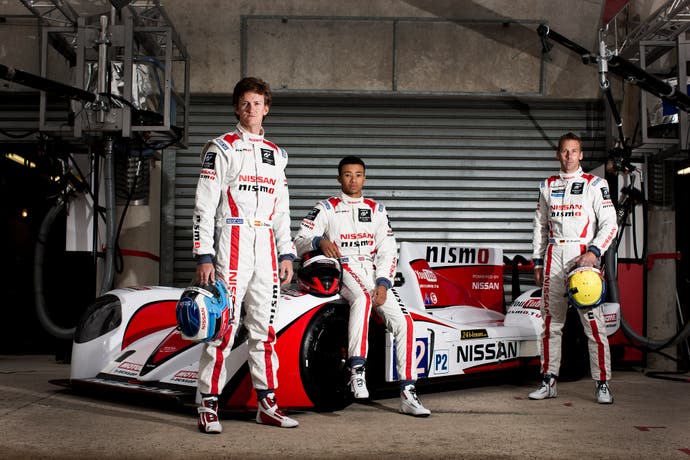
Complementing the new suspension model beautifully is a new tyre formula that, while perhaps not as immediately noticeable a change, is a similarly huge step forward. The main difference is that the loss of grip is far more progressive than in GT5. That means more controllable slides and more moments where you can save a wayward car from spearing off into the gravel trap. For accomplished drivers, it's about creeping towards the point where the rubber is at the very limit of adhesion, but no further - squeezing the maximum cornering speed out of the tyres before they begin to slip across the asphalt. It's not quite at the promised land of real-time sidewall deflection and tread-block deformation, but the amount of information about how the tyres are behaving beneath you delivered through the steering has increased dramatically.
This new progressive grip model also means that audio feedback is suddenly useful again. Whereas in GT5 the tyres were in a near constant state of noisy distress during a fast lap, now the sound of tyre slip builds as you approach the limit. It's yet another cue that allows you to zero on into that ideal balance of speed and steering angle.
It's worth mentioning that tyre temperatures and wear appear to be handled more realistically, though it's difficult to tell in a demo where they're disabled. A glance at the HUD reveals separate meters for tyre wear and tyre temperatures, though whether Polyphony will go as far as to force you to drive around on cold tyres during the first lap of a race may depend on just how far it's prepared to push casual players rather than inherent limitations in the model.
Elsewhere, the drivetrain and transmission have been overhauled as well, and matching your revs to your downshifts is far more important, though it's a characteristic that's ironed out with even the lowest ABS setting activated. But downshift into too low a gear too early coming into a corner and you'll lock the driving wheels and unsettle the car. It's much harder to slam down the gearbox and rely on engine braking to slow you down for that 2nd gear hairpin, essentially. What it does mean is that with all the driving aids stripped back, the arcane art of heel-and-toe - where you match the revs at every down-shift - will actually make you quicker this time around.
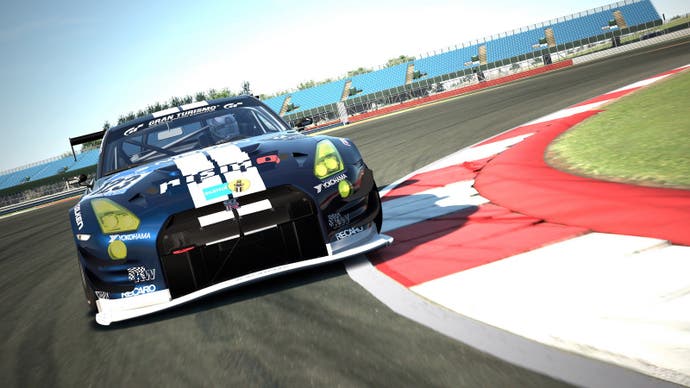
The combined result is that the whole vehicle feels defibrillated. Gone is the rail-like cornering of GT5, replaced by cars that dance across the asphalt under heavy braking and strain to break free through high-speed turns. Taking the fast Stowe corner at Silverstone in the Academy demo is now a glorious transition from trail-braking to catching the car's weight by rolling off the brakes and onto the accelerator. Without that progressive sense of grip and the feeling of weight, it would be much harder to perfect and much less satisfying when you did.
GT6 might still necessarily lag behind the more sophisticated PC simulations, which are capable of crunching far more real-time calculations, but the numbers baked into Polyphony's utterly revamped physics system result in a far more engaging and rewarding handling model. It goes without saying that the best way to experience it is using a force-feedback wheel and pedal set-up, but the changes are profound enough that the DualShock-wielding majority will benefit as well. Smashing your head against the brick wall that is the GT Academy leaderboard used to be a bit of a chore but this new handling model, and the Academy's time-attack format, reminds you that the driving itself is the end, and not just the means to it.



